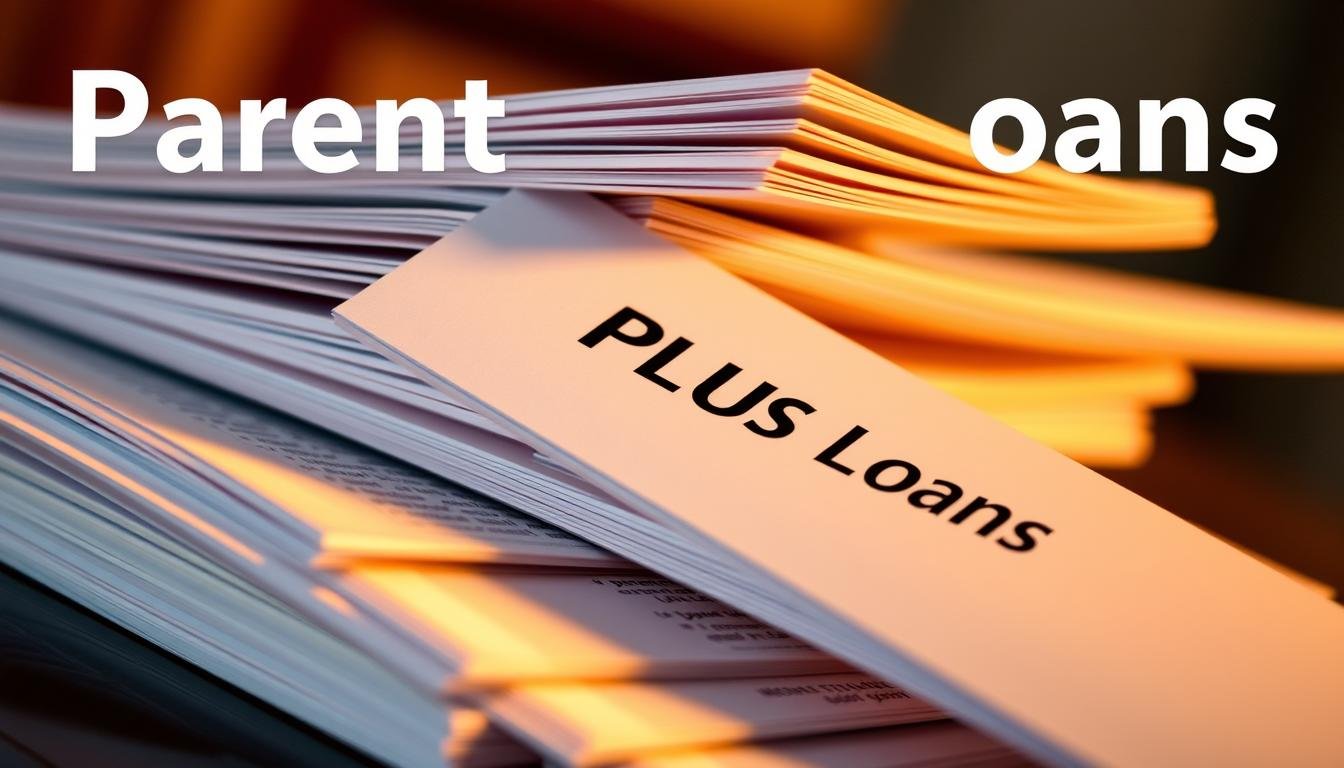For many students pursuing higher education, federal student loans are a crucial financial aid option. Among these, subsidized loans offer favorable terms, particularly regarding interest. Unlike unsubsidized loans, the government pays the interest on subsidized loans while the student is in school.
Understanding the differences between subsidized and other types of student loans is vital for making informed decisions about borrowing for college expenses. The key advantage of subsidized loans lies in their loan terms, which can significantly reduce the financial burden on students.
Key Takeaways
- The government pays the interest on subsidized loans while the student is in school.
- Subsidized loans offer more favorable terms compared to unsubsidized loans.
- Understanding loan terms is crucial before borrowing for college expenses.
- Federal student loan programs provide financial aid to undergraduate students.
- Subsidized loans can significantly reduce the financial burden on students.
What Are Subsidized Student Loans?
Subsidized student loans, part of the Federal Direct Loan Program, provide financial support to undergraduate students who demonstrate financial need. These loans are designed to make higher education more affordable by offering favorable interest terms.
Definition and Purpose
Federal Direct Subsidized Loans are a type of federal student loan that is awarded to undergraduate students with financial need. The purpose of these loans is to help students cover the cost of higher education. The U.S. Department of Education administers the Federal Direct Loan Program, which includes subsidized loans.
Who Qualifies for Subsidized Loans
To qualify for a subsidized loan, students must be enrolled at least half-time, be U.S. citizens or eligible non-citizens, and demonstrate financial need through the Free Application for Federal Student Aid (FAFSA). Financial need is determined by the cost of attendance minus the expected family contribution and other forms of financial aid, such as grants or scholarships.
| Eligibility Criteria | Description |
|---|---|
| Enrollment Status | At least half-time enrollment |
| Citizenship Status | U.S. citizen or eligible non-citizen |
| Financial Need | Demonstrated through FAFSA |
“Subsidized loans are a vital resource for undergraduate students, helping to bridge the financial gap and make higher education more accessible.”
Do Subsidized Loans Have Interest?
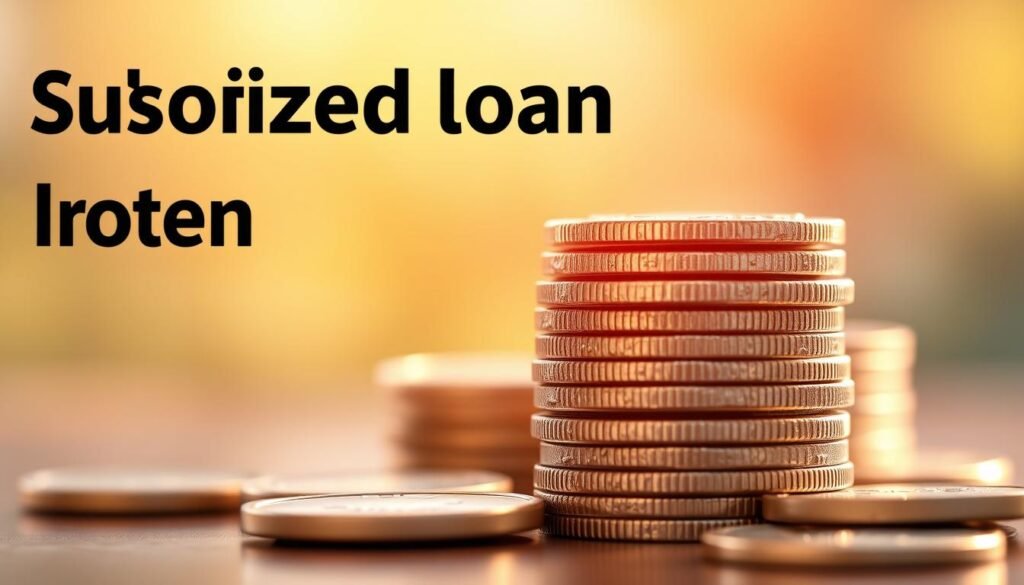
For students considering subsidized loans, understanding how interest works is crucial for making informed decisions. Subsidized loans are designed to assist students financially by covering the interest while they are in school, making them a more attractive option compared to unsubsidized loans.
How Interest Works on Subsidized Loans
Subsidized loans do accrue interest, but the federal government pays this interest during certain periods. This means that while you’re enrolled in school at least half-time, the government covers the interest, ensuring your loan balance doesn’t grow during this time. The government’s support is a significant benefit, as it saves students money in the long run by reducing the total amount they need to repay.
When the Government Pays Your Interest
The government pays the interest on subsidized loans during several key periods: while you’re in school at least half-time, during your six-month grace period after leaving school, and during periods of deferment. Once you enter repayment, you’re responsible for the interest. Understanding these periods is crucial for managing your loan effectively.
| Period | Government Pays Interest | Borrower Responsible |
|---|---|---|
| In School (at least half-time) | Yes | No |
| Grace Period | Yes | No |
| Deferment | Yes | No |
| Repayment | No | Yes |
As shown in the table, the government’s support is significant, but it’s limited to specific periods. After that, the borrower becomes responsible for the loan, including the interest. This distinction is what makes subsidized loans more favorable than unsubsidized loans, where interest accrues continuously.
Subsidized vs. Unsubsidized Loans: Key Differences

When it comes to federal student loans, two primary types stand out: subsidized and unsubsidized loans, each with distinct characteristics. Understanding these differences is essential for students to make informed decisions about their financial aid.
Interest Accrual Comparison
The primary distinction between subsidized and unsubsidized loans lies in how interest accrues. For direct subsidized loans, the government covers the interest during certain periods, such as while the student is in school. In contrast, unsubsidized loans accrue interest from the moment they are disbursed, and the borrower is responsible for paying this interest.
Eligibility Requirements
Another significant difference is in the eligibility requirements. Subsidized loans are available only to undergraduate students who demonstrate financial need. On the other hand, unsubsidized loans are available to both undergraduate and graduate students, regardless of their financial situation. This makes unsubsidized loans a more accessible option for a broader range of students.
These differences significantly impact the total cost of borrowing. Students with subsidized loans generally pay less over time because the government covers the interest during certain periods. In contrast, students with unsubsidized loans are responsible for the interest from the start, potentially leading to a higher total repayment amount.
Current Interest Rates and Loan Fees
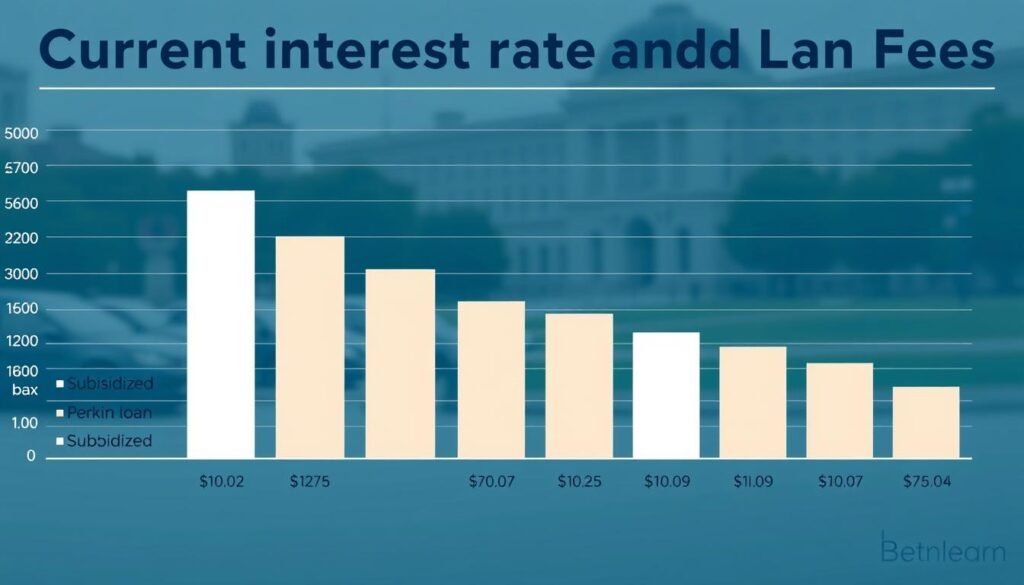
Current interest rates for subsidized federal student loans are set by federal law and can change annually. For loans disbursed from 7/1/24 to 7/1/25, Federal Direct Subsidized Loans have a 6.53% fixed interest rate for undergraduates. This rate decreases to 6.39% for loans disbursed from 7/1/25 to 7/1/26.
Subsidized Loan Interest Rates
Both subsidized and unsubsidized loans for undergraduate students typically have the same interest rate. However, the timing of when interest begins accruing differs. It’s essential to understand that these rates are fixed and apply to the Federal Direct Subsidized Loan program.
Origination Fees and Other Costs
There’s a 1.057% origination fee for Federal Direct Subsidized Loans disbursed from 10/1/21 to 9/30/25. This fee is deducted from the loan amount before disbursement. Understanding all costs, including origination fees, is crucial when making borrowing decisions.
Loan Limits and Borrowing Amounts
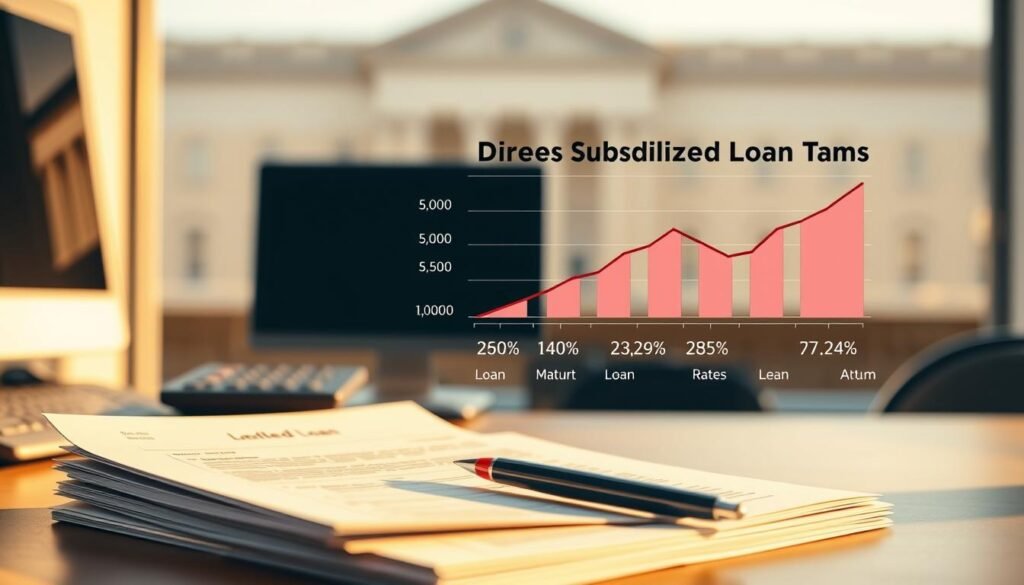
Understanding the borrowing limits for subsidized loans is crucial for students. The amount you can borrow each academic year depends on your grade level and dependency status.
Annual Borrowing Limits by Academic Year
For dependent undergraduate students, the annual borrowing limits are as follows:
| Academic Year | Total Loan Amount | Subsidized Amount |
|---|---|---|
| First Year | $5,500 | Up to $3,500 |
| Second Year | $6,500 | Up to $4,500 |
| Third, Fourth, and Fifth Year | $7,500 | Up to $5,500 |
Aggregate (Lifetime) Borrowing Limits
The undergraduate aggregate loan limit is $31,000 (Up to $23,000 Subsidized) for dependent students and $57,500 (Up to $23,000 Subsidized) for independent students.
How to Apply for Subsidized Federal Student Loans
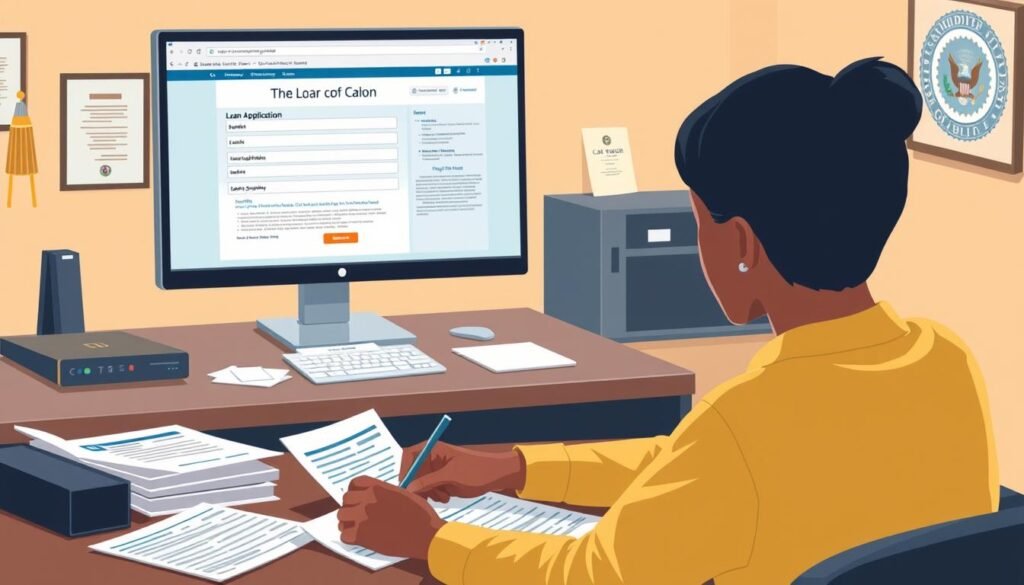
To secure subsidized federal student loans, students must follow a straightforward application process that begins with completing the Free Application for Federal Student Aid (FAFSA). This critical step determines eligibility for financial aid, including Direct Subsidized Loans.
FAFSA Requirements
The FAFSA is available at studentaid.gov. To be eligible, students must be U.S. citizens or eligible noncitizens, enrolled at least half-time, and maintaining satisfactory academic progress. Filing the FAFSA early is crucial as subsidized loan funds may be limited at some schools.
Entrance Counseling and Master Promissory Note
After accepting the loan, students must complete Entrance Counseling and sign a Master Promissory Note (MPN) on StudentAid.gov. Entrance Counseling helps students understand their rights and responsibilities, while the MPN is a legal commitment to repay the loan. Students should review and accept loan offers through their school’s financial aid portal, borrowing only what they need.
Repayment Options and Grace Periods
Once students graduate or drop below half-time enrollment, a 6-month grace period commences before loan repayment starts. During this period, borrowers are not required to make payments, providing them with a temporary reprieve from their loan obligations.
After the grace period ends, repayment begins, typically spanning 10 to 30 years. Borrowers have various repayment plans to choose from, including Standard, Graduated, Extended, and income-driven repayment options, allowing them to select a plan that best fits their financial situation.
It’s essential to note that during repayment, interest accrues on subsidized loans. Borrowers become responsible for this interest once the grace period concludes. Understanding the terms of their loan, including deferment and forbearance options, can help borrowers manage their debt effectively.


